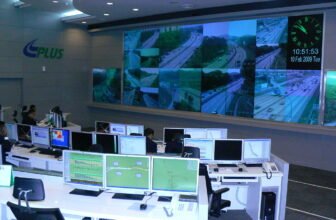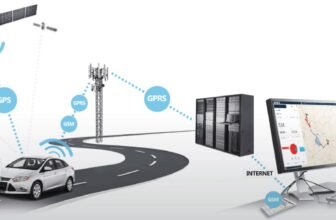
How Satellite Technology will Ignite Space Tourism and Exploration
Satellite Technology: The Backbone of Space Tourism and Exploration
The dream of space tourism and deep-space exploration is rapidly becoming a reality, thanks to advances in satellite technology. Satellites have been integral to human space activities for decades, providing navigation, communication, and Earth observation capabilities. However, in the coming years, they will play an even more critical role in facilitating commercial space travel, sustaining long-term lunar and Martian missions, and ensuring the safety and efficiency of extraterrestrial ventures. This article explores the impact of satellite technology on space tourism and how it will be vital in expanding humanity’s reach into the cosmos.
The Rise of Space Tourism
Space tourism has long been the subject of science fiction, but recent advancements by companies like SpaceX, Blue Origin, and Virgin Galactic have brought this vision closer to reality. Unlike traditional government-led space missions, space tourism aims to make extraterrestrial travel accessible to private individuals. However, the challenges of space tourism—ranging from safety concerns to real-time monitoring—underscore the need for robust satellite infrastructure.
Enhancing Communication and Connectivity
One of the most crucial elements for space tourism is reliable communication. Tourists traveling beyond Earth will need uninterrupted connectivity with mission control and loved ones. Satellite technology will enable real-time communication through high-speed data links, ensuring passengers remain connected, even in orbit or deep-space environments. Companies like SpaceX’s Starlink are already deploying satellite networks that can support space tourism ventures with enhanced broadband coverage.
Navigation and Tracking
Navigation is another critical factor for safe and efficient space tourism. Global Positioning System (GPS) satellites currently serve terrestrial navigation, but new satellite constellations will be designed to extend these capabilities into space. Advanced navigation satellites will guide space tourists’ journeys, ensuring precise tracking of spacecraft trajectories, docking procedures, and landings on the Moon or Mars.
Onboard Safety and Monitoring
Safety is paramount in space travel. Satellites will play a pivotal role in monitoring space tourists’ health, spacecraft integrity, and environmental conditions. Remote sensing satellites can track solar radiation, space debris, and other hazards, allowing mission control to take preventive measures. Additionally, wearable health monitors connected to satellite networks will provide real-time biometric data, ensuring passengers’ well-being throughout their journey.
Satellites in Lunar and Martian Exploration
Beyond space tourism, satellite technology will be integral to missions aimed at exploring and colonizing the Moon and Mars. The Artemis program, spearheaded by NASA, aims to return humans to the Moon, and private companies have ambitions of establishing permanent bases on Mars. In these missions, satellites will provide critical support in multiple areas.
Lunar Communication Networks
For sustainable lunar exploration, establishing a reliable communication network is crucial. NASA and private enterprises are developing satellite constellations, such as the Lunar Gateway and the LunaNet project, to ensure uninterrupted communication between Earth, lunar habitats, and astronauts. These networks will support voice, video, and data transmissions, enabling real-time collaboration between scientists on Earth and space explorers.
Martian Navigation and Reconnaissance
Navigating Mars presents significant challenges due to its thin atmosphere and rugged terrain. Satellite technology will facilitate precise landing and exploration through high-resolution imaging and topographical mapping. Satellites like the Mars Reconnaissance Orbiter (MRO) have already provided invaluable data, but future satellites will offer enhanced navigation, guiding autonomous rovers and crewed missions safely across the Martian surface.
Resource Identification and Sustainability
Long-term space exploration depends on utilizing in-situ resources. Satellites equipped with hyperspectral imaging will help identify water ice deposits, mineral-rich areas, and suitable locations for habitation. This will enable space agencies and commercial entities to plan sustainable missions by reducing reliance on Earth-based resources.
The Role of Satellites in Space Habitats and Space Hotels
As space tourism matures, space hotels and orbital habitats will become the next frontier. Establishing these habitats requires advanced satellite-based infrastructure to provide essential services such as climate control, security, and supply chain management.
Climate and Environmental Monitoring
Satellites will play a vital role in maintaining optimal living conditions in space hotels. Environmental monitoring satellites will track temperature, radiation levels, and air quality, ensuring that these habitats remain safe for long-term human occupancy.
Orbital Logistics and Supply Chain
Managing the logistics of space hotels will be a complex task. Satellites will be essential for coordinating supply deliveries, tracking cargo spacecraft, and optimizing orbital trajectories. AI-powered satellite networks will ensure that resources such as food, water, and oxygen are delivered efficiently and on time to space tourists and explorers.
Artificial Intelligence and Autonomous Systems in Satellites
The integration of AI with satellite technology will further enhance space tourism and exploration. AI-powered satellites will enable autonomous decision-making, predictive maintenance, and real-time problem-solving. These capabilities will reduce the reliance on ground-based mission control and enhance the efficiency of deep-space operations.
Predictive Maintenance
AI-driven satellites will monitor spacecraft and habitats for potential malfunctions, predicting failures before they occur. This proactive approach will significantly increase the longevity of space missions and minimize risks to human occupants.
Autonomous Spacecraft Navigation
Future spacecraft will rely on AI-enhanced satellites for autonomous navigation, reducing the need for constant manual control. This will be especially useful for long-duration missions to Mars, where communication delays make real-time control challenging.
Challenges and Future Prospects
While satellite technology offers immense potential for space tourism and exploration, several challenges remain. These include space debris management, cybersecurity threats, and the high costs associated with launching and maintaining satellite networks. However, advancements in satellite miniaturization, reusable rocket technology, and international collaboration will pave the way for overcoming these obstacles.
As commercial space travel and deep-space missions become more prevalent, satellite technology will continue to evolve, offering new opportunities for exploration and innovation. With continued investments and breakthroughs, satellites will remain the backbone of humanity’s expansion beyond Earth, enabling dreams of interplanetary travel and extraterrestrial living to become a reality.
Satellite technology is not just an enabler but a necessity for the future of space tourism and exploration. From enhancing communication and navigation to ensuring the safety of astronauts and tourists, satellites will play a fundamental role in humanity’s extraterrestrial endeavors. As we stand on the brink of a new space age, one thing is clear: the stars are no longer out of reach, and satellite technology is the key to unlocking the universe for all.





